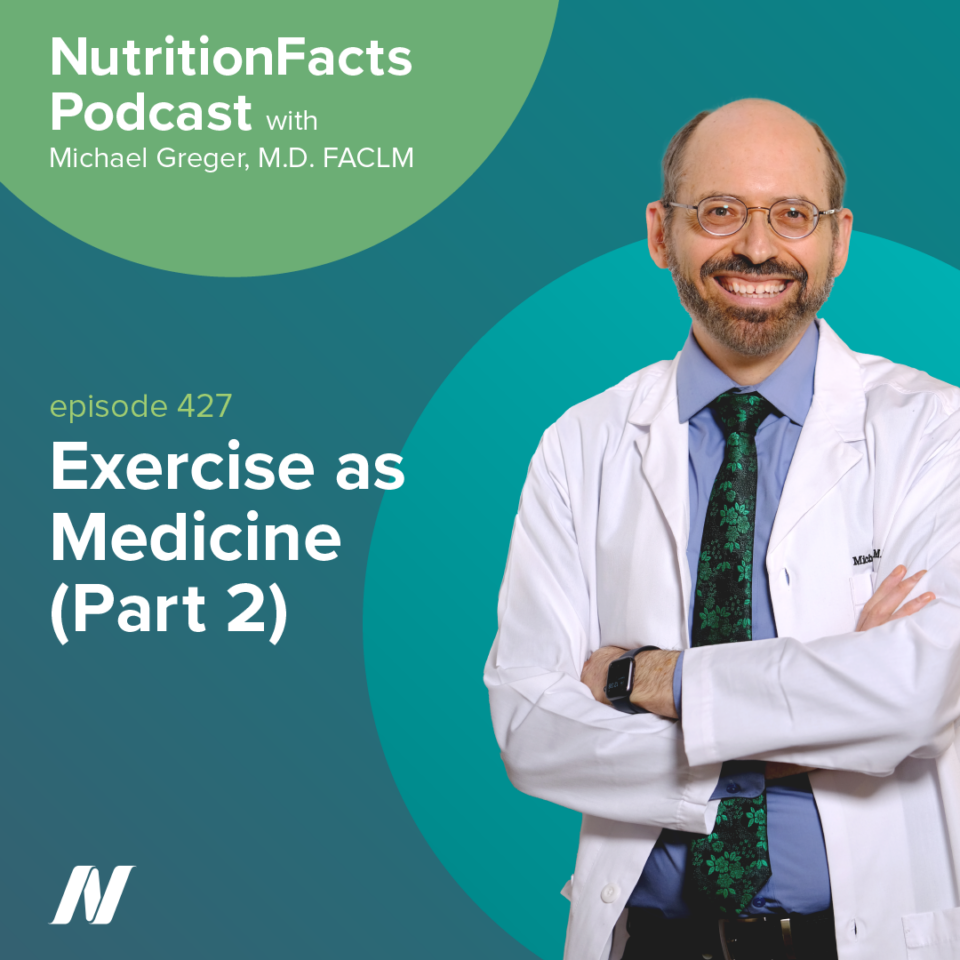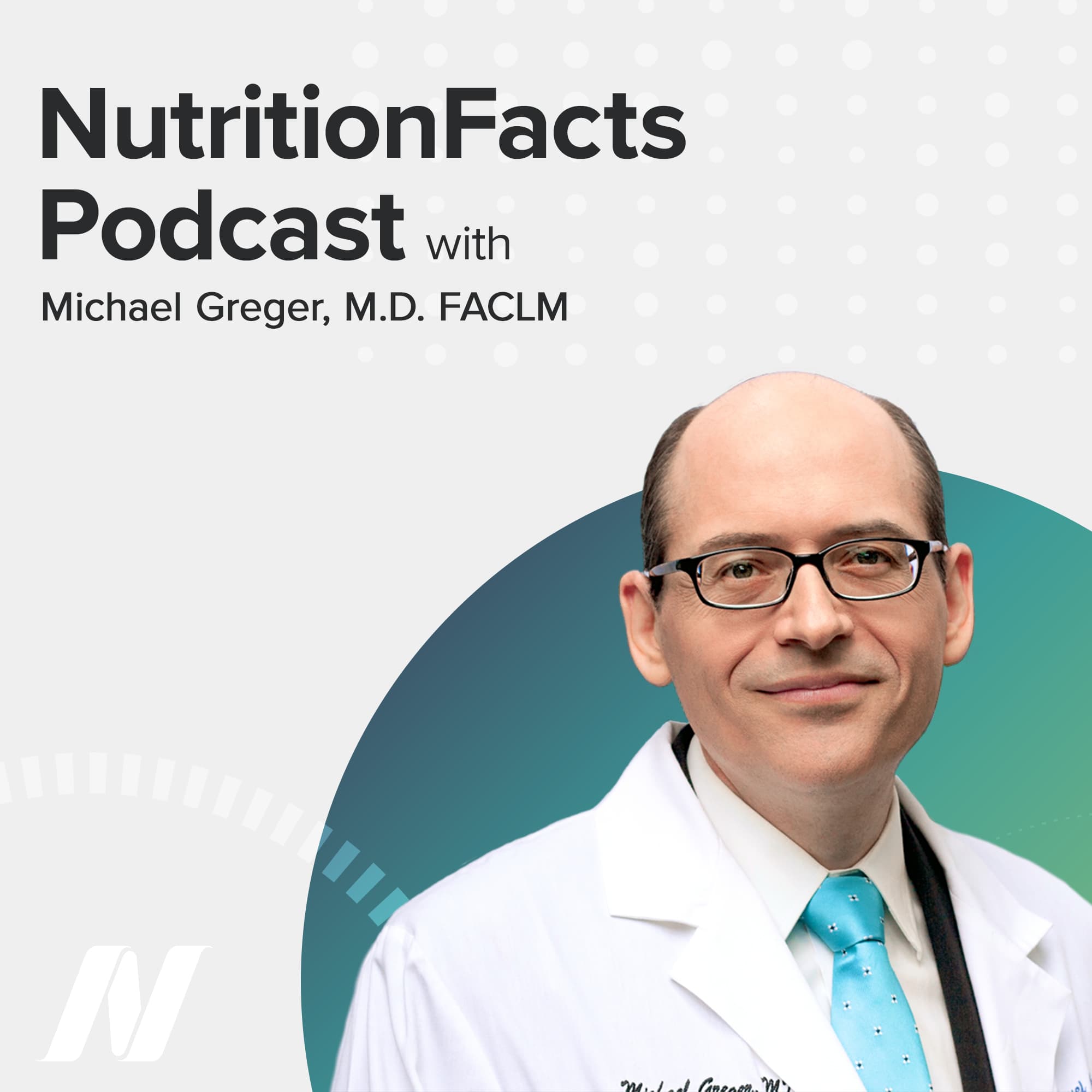Today, we continue with our series on exercise as medicine. And I have to say I was surprised by how much controversy there is in the medical literature over whether the apparent longevity benefits of exercise are even real.
Whether 6 percent of premature mortality is related to physical inactivity, 9 percent, or even 15 percent, these estimates are all predicated on the presumption that the associations found linking inactivity to death rates in observational studies constitute cause and effect.
A classic study from the 1950s entitled “Coronary Heart-Disease and Physical Activity of Work” illustrates how difficult it can be to tease out causality between physical activity and longevity. London bus drivers appeared to have twice the risk of dying from heart disease compared to bus conductors, who were presumed to be protected by their climbing up and down 500 to 700 steps a day in the famous double deckers. However, it was later revealed, in a follow-up paper “Physique of London Busmen,” that based on the measurements of their starting uniforms, the bus drivers started out significantly heavier.
Similar issues surrounding reverse causality continue to haunt observational exercise studies to this day. Is exercising enabling good health in seniors, or is good health enabling exercise in the first place? Is inactivity leading to chronic disease, or is chronic disease leading to inactivity?
Then, there are the confounding factors––the archetypical one being less smoking among active individuals. With the exception of elite male power athletes, who may die up to nearly five times the normal rate (perhaps due to use of anabolic steroids), athletes tend to live longer than their sedentary counterparts, as much as four to eight years longer. But think of all the complicating elements, especially among professionals. Major league baseball players, Tour de France cyclists, and champion skiers all live longer than the general population. But that doesn’t mean it necessarily has anything to do with home runs, bicyclettes, or the slopes.
Maybe it’s partly the superior genetic constitutions that allow for such physical feats in the first place, or the socioeconomic status bestowed upon the winner. Yes, Olympic medalists live longer than the general population, but so do grandmasters of chess, as revealed by a study subtitled “Mind versus muscle,” suggesting it’s the afforded status rather than muscular exertion. Winners of a Nobel Prize and Oscar award similarly have superior life expectancy.
To try to tease out these factors, researchers have compared the effects of leisure time physical activity to occupational physical activity. If the link between exercise and longevity were truly causal, then the context within which you get the same exertion shouldn’t matter.
As you can probably guess, though, manual labor can sometimes be associated with a shorter, not longer, life, again suggesting the primacy of confounders like socioeconomic factors. Is it possible that a genetic predisposition to physical fitness is what accounts for the exercise/longevity link, rather than the physical activity itself? In other words, is it just genetic selection bias? We know exercise and longevity are associated with one another, but instead of exercise causing the longevity, maybe the same genetic predisposition to exercise also leads to longevity, whether or not you actually exercise at all.
This question was raised by a pair of mind-blowing studies. The first involved a comparison of two strains of rats, one bred to have a high intrinsic running capacity, and the other bred to have a low running capacity. Then they were randomized to either get a running wheel or not.
Even without exercising, the high-fitness ability rats lived longer than those with the low fitness ability, but unexpectedly the provision of running wheels so they could all exercise voluntarily cut the lives of both strains short. Running reduced their life expectancy.
Using twin studies, we can show that there are also genetic predispositions to exercise in humans too. When identical twins leave home to start their separate lives, their exercise habits are much more likely to be “concordant” than fraternal twins, meaning if one twin vigorously exercises, then the other twin is more likely to do the same if they share 100 percent of their DNA, instead of just 50 percent like regular brothers and sisters. How could we tell if it’s this genetic predisposition to exercise, rather than the actual exercise, that accounts for athletic longevity? Well, what about the rare cases of identical twins whose exercise habits diverge? With the same DNA, would intense physical activity make a difference? Apparently not. The same mortality rates were found in identical twins whether they exercised vigorously or not.
A critical analysis on whether physical activity is a cause of longevity concluded “the undisputed health-related benefits of exercise have yet to translate into any proven causal relationship with longevity.” This was based on the fact that the randomized controlled trials in clinical populations, suffering mostly from neurological conditions, have shown a drop in premature death rates. Exercise interventions have failed to show exercise extends life among apparently healthy individuals. However, these are difficult studies to run.
Take the largest such study, where more than 1,500 older men and women (average age 73) were randomized to one of three groups for five years: a recommendation to just follow the national guidelines of 30 minutes a day, five days a week, or to replace two of those weekly sessions with 50-minute sessions, or to replace two of those weekly sessions with four four-minute bursts of high intensity interval training at 90 percent of peak heart rate. And there ended up being no difference in mortality rates between the two extra exercise groups and the control group. This may be because the control group ended up exercising so much. The control group advised to exercise for just 30 minutes ended up exercising more than the group told to boost weekly sessions up to 50 minutes. All participants had the potential to be randomized to the high-intensity group, so the enrollees had to be pretty fit at baseline. And with expectations of health checks at years one, three, and five, the control group stepped it up so much it blurred the distinctions between the three groups.
In our final story, we look at the data that show It may be prudent to limit chronic, vigorous exercise to no more than an hour a day and no more than five hours a week.
How much exercise is too much? There don’t appear to be any studies on the longevity of marathon or triathlon runners, but this study in which more than a thousand joggers were followed for up to a dozen years is able to offer some insight.
Surprisingly, the “light” joggers appeared to have the lowest mortality rates. Moderate joggers had a worse mortality rate than light joggers. They still did better than that of sedentary non-joggers, but strenuous joggers did not. There wasn’t a significant difference in death rates between those jogging more than four hours a week and those not jogging at all. So, the death versus jogging intensity graph was a U-shaped curve, with the lowest mortality bottoming out among those taking it relatively easy, clocking 1 to 2.4 hours a week over no more than three days at a slow or average pace. So, more may not necessarily be better.
The jogging study spurred sensationalist headlines like “Fast Running Can Kill,” but the strenuous joggers were just dying at a higher rate compared to light joggers, not compared to the general population of non-joggers. Here’s what a meta-analysis found of all such similar studies: Yes, diminishing returns, but the only clear mortality bump was associated with inactivity. However, there was a retrospective analysis of more than a thousand male Olympic track and field athletes that suggested that those who had extraordinary early peak performance had lifespans shortened by almost five years. The regimen for peak performance may not be the same as that for optimum health and longevity. Perhaps the mantra “exercise is medicine” metaphor should be taken a step further, recognizing that like any powerful medicine, there may be a safe range of dosing.

 Previous Podcast
Previous Podcast Next Podcast
Next Podcast